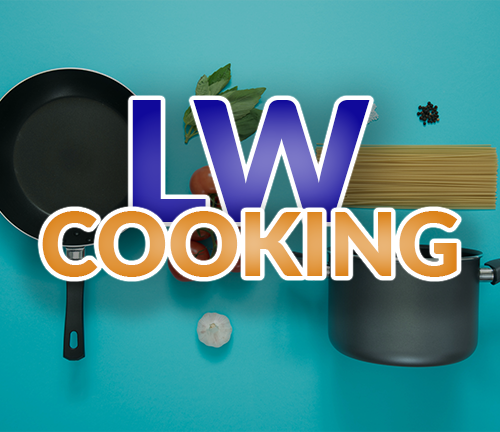- 4 Posts
- 483 Comments

 1·13 days ago
1·13 days agoI just really want to see where the numbers come from.
You know people self hosting email, I know people self hosting email. But that is certainly not the case for the vast, vast majority of individuals. For businesses, I have seen Exchange take over what used to be smaller hosts, and Google has broken into the small/medium business world as well. I have searched and searched and found nothing, but I don’t see why it should be so hard to do. Obtain a list of email addresses from some data breach (I dunno how but I’m sure security researchers do it all the time) then check their DNS to see what proportion point at big tech. My gut feel is that it’s a large proportion, but maybe that’s just the corner I work in.

 2·13 days ago
2·13 days agoemail can be run using hundreds of servers on dozens of platforms even from your own house and interact with the email network.
It’s nice that it can, but the point of this list is is that what actually happens for the majority of people?
And from my experience, the answer is no, the vast majority of people use Microsoft or Google.
This claim is “Top Provider User Share: Google ≈ 17% → Score: 27/30”
Where does this number come from? Gmail alone claims 1.5 billion active users. Outlook.com has 500 million. But then you have to start adding up all the email users worldwide that are using services hosted by Microsoft (all the Exchange business customers), and the google customers as well (that may or may not be included in the Gmail figures). Then there are all the ISP email addresses that use these services as the provider.
I find it hard to believe that email is as decentralised as claimed here, and I’m really keen to see more data on how it was calculated.
The reason I find it so hard to believe is that when Microsoft fucks up (and given time they always do), a significant portion of the business customers I deal with get affected.

 11·13 days ago
11·13 days agoWhat surprises me is that they count using an email service as self-hosting. With that logic wouldn’t bluesky get a high score because people can bring their own domain easily?

 3·13 days ago
3·13 days agoWhaaaaaaaat? Pivot tables are a 2 second job to summarise large amounts of transaction data or similar by month or year. Lookups or countifs would take so much longer!
Not to mention that you can drill into the data using them.

 4·13 days ago
4·13 days agoI tend to find we more tech savvy people vastly overestimate how tech savvy the average person is.
However, I suspect you are right about the people interested in home automation eventually hitting that point and coming across Home Assistant.
Home Assistant have done a great job reducing the barrier to entry. Significant improvements in UI editors and all but removing the need for any YAML config for an average user. Plus the Home Assistant Yellow and Green meaning you no longer need to know how to set up a server and can instead buy a hub off the shelf. Surely these efforts are a big part of why the number of installations has increased so much.

 14·14 days ago
14·14 days agoYou sound like you know your LibreOffice.
My experience is they are quite different but I’ve been able to do the same things for the most part.
But how the hell do I make a pivot table that looks and functions as nice as the plain old default one in Excel?

 1·14 days ago
1·14 days agoYeah perhaps. I don’t have a Spotify connect device so can’t try it.
I quite like having the LLM, and listening to all the weird questions the kids ask.

 4·15 days ago
4·15 days agoAs I understand it you can also use a locally running LLM. But that requires power my Raspberry Pi 4 doesn’t have.
I’m not sure if Music Assistant has the capability yet, but I presume you could have a no-LLM version if you could trigger a search and to play the first song found.

 22·15 days ago
22·15 days agoI’ve been using Home Assistant for a couple of years (from memory I think it was soon after joining Lemmy I was convinced to set it up), and I have to say they have made great progress. It’s amazing to see them double their active installations from 1 to 2 million in one year, that’s awesome for what feels like a very niche product.
The progress on voice in particular is amazing. With a Voice preview, OpenAI, and Music Assist, my kids can start music where they only know some words and not the name of the song.
The only complaint is wake word detection isn’t great with our accent. My wife swears it’s sexist, she thinks it only listens if she puts on a male voice 😅
 4·15 days ago
4·15 days agoI’m assuming the reasons we don’t use a square are cost and space. Phones are pretty tightly packed in, every 1mm width you add probably has flow on effects for other things you can’t have.
And I am not sure what the limiting factor is but if you add a bunch more light sensors to make it square I’m assuming that comes with additional cost, not just the sensors but now you need to connect up a bunch more to whatever controls it which then might need more processing power or smaller connectors or some other flow on impact.
 10·15 days ago
10·15 days agoBut the camera sensor is a rectangle, right? So you could do it with software, but you would lose resolution because the sensor isn’t as wide in that direction. You’d just be cropping the image.
Or just browse All
Ah I guess it’s that it shows what they want then they have to install the app to buy it?
Maybe this article is intended for advertisers to convince them of the value.
Isn’t the idea that if you advertise you will get more people looking at/downloading your app and therefore rank higher?
It doesn’t make it not paid product placement, but I don’t think it implies that people are buying spots on the ranking.
It does imply the rank is almost useless because most high rankers are just spending a lot on ads.

 5·18 days ago
5·18 days agoThe house has to work damn near 100% of the time, so I run it on a dedicated Raspberry Pi 4 that has Home Assistant OS with the full stack on it. Works great!
Where I work we have a whitelisted set of extensions we can install from the Chrome store (no Firefox unfortunately).
I’ve never seen an IT project where the majority of people on it had an ad blocker installed.
I definitely overestimated how tech savvy IT workers were before I started working with them.

 2·21 days ago
2·21 days agoThere used to be (maybe still is) a “Made in NZ” label. But I am not sure if it’s not around anymore or there just isn’t much that you could say is 100% NZ made.
E.g. most of our “Made in NZ” bacon is made from Canadian or European pork. Made in NZ from 1% NZ ingredients.
I love the Aussie labels because I would definitely buy based on the ingredients being mostly NZ origin rather than just whether some processing happened here.



I’ve just straight cross posted from a Lemmy.ca post, resources included, as it seems like important world news.